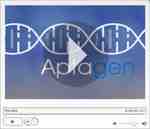R&D Contract Service
Complete this 4-step form to receive a PDF Quote on your project Cost & Time.
- 1
Step 1 Target Type
- 2
Step 2 Target Details
- 3
Step 3 Time & Deliverables
- 4
Step 4 Contact Info
Intellectual Property (IP):
Aptagen owns its proprietary processes of aptamer development; however, the Client will own 100% of the rights to the aptamers Aptagen develops for the Client. Client contracts Aptagen to perform the R&D, the Client owns the IP.
PRICE MATCH GUARANTEE: Contact Us. We will make every effort to match any competitor’s quote (for equivalent services). Just provide documentation. Thank you.
Depending on Client needs, the project may be tailored to meet certain milestone objectives such as:
- High Affinity (Kd) AND High Specificity; eliminate (false-positive) cross-reactivity.
- Wide dynamic range between positive and negative samples (LOD)
- Activation (EC50) or inhibition (IC50) against a target enzyme
- Identification of unknown and unique biomarkers in serum, blood, or tissue samples
- Cell or tissue-targeting for drug delivery
- Convert an already existing aptamer into an apta-beacon™ to detect analytes free in solution (see Apta-Beacons™)
The target sample(s) do not have to be pure; crude target sample(s) are acceptable.
>>Phase I: Library Enrichment – SELEX (1-2 months)
Iterative rounds of screening an initial random library against a target for positive selection, and counter-selection against a counter-target or sample matrix for specificity.
Client Materials: Please note that the Client will need to provide the target samples and matrix material for Aptagen. An additional convenience fee will be applied if Aptagen is responsible for sourcing materials. It is highly recommended that counter-target(s) is also provided for enrichment of highly specific aptamers. A Material Acquisition Form must be completed for background information on the target, any associated hazards, and handling requirements.
Full Progress Report (including enrichment chart and qualitative assessment of polyclonal response to positive, counter, and negative matrix conditions).
Small Targets: Small Molecules or Peptides
Large Targets: Proteins, Biomarkers, Cells, Tissues
>>Phase II: Polyclonal Sequencing & Bioinformatic Analysis (2-3 weeks)
The enriched polyclonal pool is sequenced and thousands of aptamer sequences are provided. Client will have access to all the data generated from the polyclonal aptamer pool in Phase I (millions of sequences).
Candidates are grouped into families on the basis of sequence homology, then ranked according to the ratio of their representation in the positive population as compared to control population(s). The stability of a sequence as predicted by secondary structure analysis is also considered for choosing the best candidates.
The most promising aptamer candidates are identified using proprietary bioinformatics. A full Progress/Analysis Report on a handful of the most likely candidates based on sequence homology, frequency, and motif analysis. Client will have access to all of the aptamer sequence information and data. Client owns patent rights to all the sequence information.
>>Phase III: High-throughput Screen of Monoclonal Candidates (2-3 weeks)
At least 200 aptamer candidates are synthesized on microarray for semi-quantitative assessment against positive and counter targets to determine the top 5 candidates for further characterization.
† Not available for cell-based targets or peptimer libraries. Under these circumstances, refer to next phase for assessment.
Report on fluorescence responses produced by release of fluorescent probe when structure-switching sequences bind to target or counter-target (in presence of matrix).
>>Phase IV: Candidate Synthesis & Qualitative Assessment (1-4 weeks)
Monoclonal aptamer oligo candidate(s) are synthesized, purified, and QC’d. Project costs and time are based on unmodified aptamers, e.g., without fluorescent labeling.
The top 5 candidates are qualitatively assessed in “pre-validation” before the next Phase for characterization and validation.
Gel-shift assay, Microscopy, Flow Cytometry, CD spectra for conformation changes, or Imaging, etc.
At least 20 nmoles (~0.5 mg) of each purified ssDNA aptamer, sufficient material for the next phase of the project. Unused material will be provided to Client upon project completion. If more material is needed, a separate quote will be issued. Inquire for non-ssDNA aptamer guaranteed yields.
>>Phase V: Quantitative Assessment of Affinity & Specificity (1 month)
Each candidate is quantitatively tested for Kd affinities, signal-to-background, LOD, targeting, or EC50/IC50, etc.
SPR, BLI (ForteBio), Isothermal Titration Calorimetry (ITC), Microscale Termophoresis (MST), CD spectra for conformation changes, Dot Blot, Gel-shift assay, ELONA (ELISA), Microscopy, Flow Cytometry, or Imaging, etc.
For Biomarker Discovery, Binding characterization can be substituted with Pull-Down Assays and Mass Spec Analysis for target identification.
Full Report on Kd Affinities and Specificities. Aptagen validates monoclonal candidates.
At least one (1) aptamer candidate must meet Anticipated Milestone Outcome.
>>Phase VI (Optional): Optimization & Assay Development (1-2 months)
This phase may not be necessary. At the Client’s discretion, Aptagen can:
- test additional candidates under a variety of conditions
- reselect using a “biased” library based on the best-performing aptamer candidate
- use the best-performing aptamer as the basis for an extended-length library to perform an “epitope-scan reselection” with sequencing and validation
- truncate aptamer oligos to reduce production costs for commercialization
- “multimerize” aptamers to further increase affinity/avidity
- carry out “phosphorothioate substitution scan” to increase affinity
- use Aptagen’s proprietary in silico maturation algorithm to search and explore sequence space for achieving >10-fold improvement.
This Phase may trigger only if Client believes Optimization:
- is cost effective to minimize production costs while maximizing activity for large-scale commercial use
- widens the claims in Client’s IP to strengthen the coverage of all possible aptamer sequence variants.
“No Capturing, No Washing, Just READ”™
Inquire about re-selection to develop an Aptamer ‘Sandwich’ Assay (ASA), or Apta-sensor Development, including Lateral Flow Assays (LFAs), apta-switches, or the apta-beacon™ technology to eliminate antibody-based ELISAs.
Project Quote Inquiry
Thank you for contacting Aptagen regarding your aptamer development needs. We can develop aptamers against your target(s) of interest.
Complete this 4-step form to receive a PDF Quote on your project Cost & Time.




We are always looking for ways to improve. Please tell us what you think.